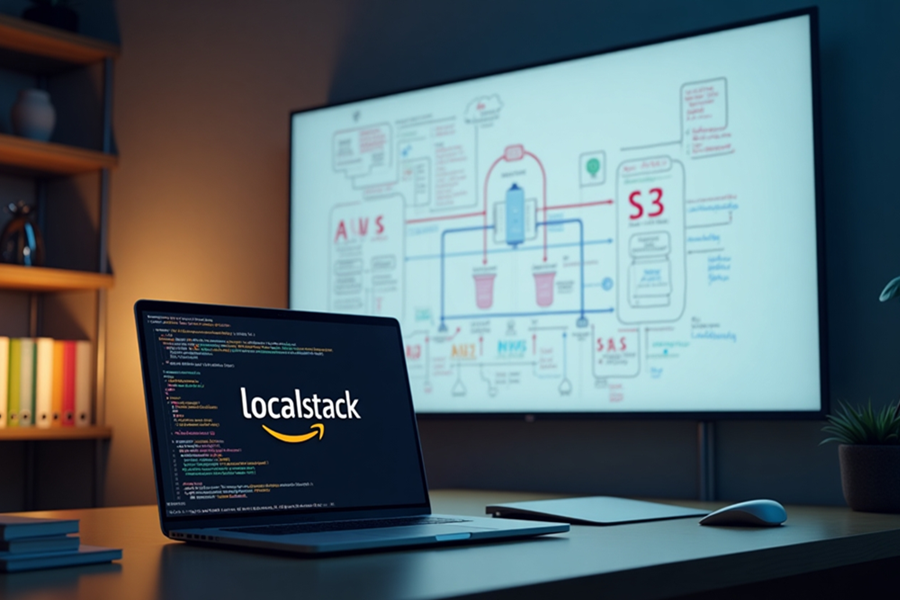This week in PSC (192) | 2025-05-22
All three of us attended.
- We discussed the situation with
readlineand the filehandle error flag once again, starting over by revisiting the basic premise of the error flag. We think we now have a better understanding the overall situation, and this led us to a different approach about how to correct the overall situation, which we will outline as a proposal soon. - We have been wanting to revert #22465 but wanted to include a testcase that demonstrates why, which we hadn’t gotten to. In order to get this into the looming final dev release, we talked through what the testcase needs to look like, and will submit a pull request ASAP.
- We caught up on new issues and pull requests for release blocker triage. We then reviewed the state of our current release blockers, some of which have been resolved, and one of which (#23026) we demoted based on our new understanding about the
readlinesituation.
AWS S3 Encryption

AWS S3 Encryption isn't as complex as I thought initially. I had fun playing with it. You can give it a try too. Please check out the link below for more information.
https://theweeklychallenge.org/blog/aws-s3-encryption
The sculpture shapes the sculptor.
Parenting aint easy. Certainly it is often something your kids teach you. Even worse, it often starts with ”<INSERT_KIDS_FRIENDS_NAME>’s dad lets him do <INSERT_CURRENTLY_PROHIBITED_ACTIVITY>”. In this constant battle to shape your offspring into a model citizen, with the values you value, and turning him/her into a self-sustaining organism, one applies tools that enhance particular features, remove the superfluous or the undesirable.
Learning XS - Invocation
Over the past year, I’ve been self-studying XS and have now decided to share my learning journey through a series of blog posts. This sixth post introduces you to subroutine invocation in XS.
Announce: Perl Wiki V 1.26
Here we go: Download me
This week in PSC (188) | 2025-04-24
All of us showed up for a long meeting of identifying release blockers. First we went over the issues and PRs submitted since last week, none of which turned out to be new potential blockers. Then we examined all of the issues and PRs of interest we had previously identified. We applied the “Release Blocker” label where necessary, left comments, and merged a few of the PRs. Out of 20 issues and 11 PRs on our list, we identified 5 issues and 1 PR as blockers, of which the PR and several of the issues all pertain to the same problem with retention of errors on filehandles across I/O operations. This issue needs an informed decision, which we did not have the time for in this meeting, but will pursue next.
Our next meeting will be in person at the PTS.
Map::Tube Unicode

Map::Tube now supports Unicode character in station names.
Please check out the link below for more information.
https://theweeklychallenge.org/blog/map-tube-unicode
Learning XS - Prototyping
Over the past year, I’ve been self-studying XS and have now decided to share my learning journey through a series of blog posts. This fifth post introduces you to subroutine(method/function) prototypes in XS.
Julia in cruiser mode

Yes, this is a Mandelbrot fractal with three heads. No cloning needed, just multiply z to the power of four and proceed as usual. Well all this and so much more contains the latest release of Juliagraph 0.7. Intro here. All I wrote about the Cellgraph and Harmonograph applies again, more features, better controls and ... you can cruise the fractal by mouse.
This week in PSC (187) | 2025-04-17
We were all present.
CVE-2024-56406 is published and has been addressed by new point releases. Please upgrade or patch your perl promptly if affected. We thank Steve Hay, Andreas König and Stig Palmquist for doing the heavy lifting, as well as Nathan Mills for discovering the problem, and Karl Williams for providing the fix. We re-/learned a number of old and new lessons about the handling of security issues, which we will write up as new process for the PSC, the Perl Security Team, and the CPANSec group, to be jointly reviewed and agreed at the looming PTS.
We started winnowing this release cycle’s pull requests for potential release blockers. We briefly reviewed all 72 pull requests and identified 11 of interest for a closer look.
We reviewed the 2 new issues filed since last week for release blocker potential and put one of them on our list for closer review. We then started a closer examination of the 20 issues we identified as candidate blockers. We got through 5 issues, none of which we considered blockers.
Map::Tube - experimental

Couple of experimental features added to Map::Tube.
Please check out the link below for more information.
https://theweeklychallenge.org/blog/map-tube-experimental
Learning XS - Overloading
Over the past year, I’ve been self-studying XS and have now decided to share my learning journey through a series of blog posts. This fourth post introduces you to overloading operators in XS.
Writing a 1GB file in perl
One of my pleasures in perl is learning the C language again. Something about the perl language makes it easier to write C, but while sharing the same space in my brain.
So how can I write a trivial program to write exactly one GB (2^30) of data to disk?
first in perl- (Of course you prototype in perl!)
But since my c program is cleaner, here’s the C program
This week in PSC (186) | 2025-04-10
Lots has been going on. All of us showed up, though Aristotle had to join late and Philippe had to leave early, so the meeting was short but productive:
- We continued with the potential release blocker issue review and finished going over all 49 issues remaining at this time, of which we identified 11 of interest. There are now still 72 pull requests to review.
- We agreed to include the new Perl logo in the next release, but don’t yet know exactly how and where. That should be sorted out on p5p, and we will kick that off soon.
- We went over the latest point release news, where everything is finally on track. It is coming very soon.
Reaching 1.0
With the Harmonograph you can create beautiful and individual images within a few clicks. It's painting by pendulum. I already gave here an introduction. So let me just explain what is new:

Learning XS - List context
Over the past year, I’ve been self-studying XS and have now decided to share my learning journey through a series of blog posts. This third post introduces you to list context in XS.
Announce Perl.Wiki.html V 1.25 etc
My home page gives you access to:
o Perl TiddlyWiki V 1.25
o Mojolicious TiddlyWiki V 1.03
o Debian TiddlyWiki V 1.07
o Some other stuff...
This week in PSC (191) | 2025-05-15
We were all present.
- The status of smartmatch came up. It is in a weird position where it used to be part of the language, then was retroactively declared an experiment, then deprecated and slated for removal, and now it’s no longer being removed – in fact we’ve added a feature for it, and not an experimental one either. The bottom line is that it’s not deprecated any more and not experimental either, but is now just a negative feature like
indirectandmultidimensional: it’s a mistake we made that will remain part of older language versions but will not be included in future feature bundles. - Release blocker triage continues as ever. Quite a few new issues came in recently, of which we identified two issues and one pull request as blockers. One of the issues and the PR pertain to the documentation of the status of smartmatch; we expect that there may be more inconsistencies in the documentation which will need to be ironed out.
LocalStack with AWS S3

Playing with AWS S3 using LocalStack platform.
Please check out the link below for more information.
https://theweeklychallenge.org/blog/localstack-aws-s3
About blogs.perl.org
blogs.perl.org is a common blogging platform for the Perl community. Written in Perl with a graphic design donated by Six Apart, Ltd.